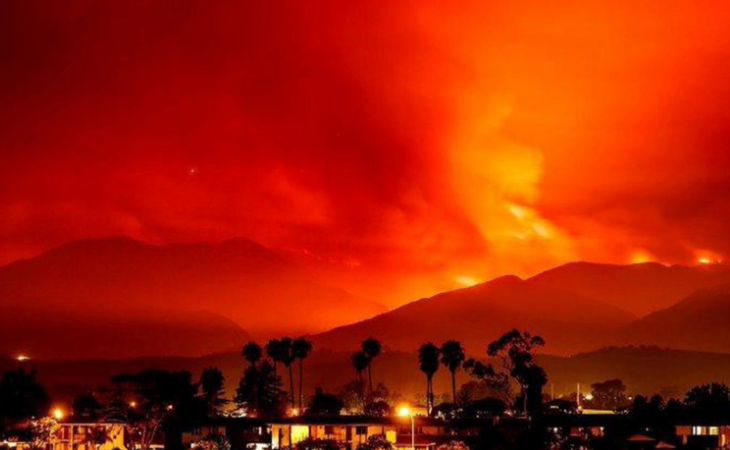In 1918, a strain of influenza known as Spanish flu caused a global pandemic, spreading rapidly and killing indiscriminately. Young, old, sick and otherwise-healthy people all became infected, and at least 10% of patients died.
Why Was the 1918 Pandemic Commonly Called the “Spanish” Flu?
The name Spanish flu emerged as a result of media censorship by the military in Allied countries during the First World War. These countries suppressed public reports of the viral infection and the death of soldiers. However, in Spain, which was neutral during the war, the media was able to widely report the high incidence of death from the illness. The virus became associated with Spain as a result.
The origins of the pandemic are debated. Four locations are often considered the source of the initial outbreak: England, France, China or the United States.
Estimates vary on the exact number of deaths caused by the disease, but it is thought to have infected a third of the world’s population and killed at least 50 million people, making it the deadliest pandemic in modern history.
The 1918 flu pandemic arrived in the USA and Canada with returning troops and made its way into even the remotest communities.
But was it even a flu? Modern science has reviewed the data and done testing to show that bacterial pneumonia was what caused most of the deaths. WOW! So the Spanish Flu was not a Flu at all! Lets take a closer look.
Could it have been caused by a bad vaccine that, just by chance was rolled out at the exact same time? Lets take a deep dive.
So was it another case where scientists playing with viruses and vaccines that went totally haywire? Doctor Fredrick Gates from the Spanish Flu was not related to Bill Gates. But it is a very strange coincidence.
Even Tony Fauci found that bacterial pneumonia was what caused most of the deaths.


Drs. Morens and Fauci also discuss the high number of deaths associated with the 1918 pandemic and the disease process, based on clinical and autopsy studies published between 1918 and 1922. Most pandemic deaths were associated with either an aggressive bronchopneumonia, in which bacteria could be cultivated from lung tissue at autopsy, or with a severe acute respiratory distress-like syndrome (ARDS) characterized by blue-grey facial discoloration and excessive fluid in the lungs.
“Histological and bacteriologic evidence suggests that the vast majority of influenza deaths resulted from secondary bacterial pneumonia,” says the report by David M. Morens, MD, Jeffery K. Taubenberger, MD, PhD, and NIAID Director Anthony S. Fauci, MD.
Did a new experimental vaccine cause the Spanish Flu? You bet
“So-called Spanish flu began in 1918 and disappeared in 1920. Caused the death of almost 50 million people. The Rockefeller Institute for Medical Research carried out a large-scale bacterial meningitis vaccination in the U.S. Army in 1918. Vaccination was supervised by MD … Frederick L. Gates. Gates again. Some soldiers received this experimental vaccine three times.
Frederick L. Gates started to experiment on vaccines in January 1918, 100 people a day start to refer to Army Camp Hospitals with cold, vomiting, and diarrhea from March 1918. This catastrophe took place in populated barracks. Bacterial pneumonia started to contaminate soldiers.
Due to the lack of medical research centers in the U.S, Rockefeller Sanitary Commission (RSC) and Rockefeller Institute for Medical Research (Later, Rockefeller University) were founded with Gates’ planning and Rockefeller’s finances. In the framework of the letter, the meningitis vaccination process started on January 15, 1918, because there was an outbreak of bacterial meningitis in the camp Funston, Kansas in October-November, 1917
Frederick Taylor Gates prepared a report on experimental vaccination on July 20, 1918, and it is still accessible online to this day. According to the information, 3700 volunteers participated in the trial and each volunteer received three injections. As for the adverse effects, the author of the report mentions several cases of diarrhea including four detailed explanations. Moreover, he notes that adverse effects were not alarming.

The new experimental vaccine is rolled out January 15, 1918. The pandemic is marked as having begun on 4 March 1918 with the recording of the case of Albert Gitchell, an army cook at Camp Funston in Kansas, United States. Soldiers at camp Funston were the first to get the vaccine.
So the new experimental vaccine is rolled out January 15, 1918 and the pandemic starts March 4, 1918 with a member of the army at Camp Funston where the new vaccines was administered. You can do the math.
This sounds a lot like the government saying the Wuhan flu definitely didn’t come from the Wuhan Institute of virology in Wuhan China doesn’t it?
Now, naysayers say: “Meningitis is a different disease, caused by a type of bacteria. It is not genetically or closely related to influenza”, Dr. Burke explained. “Influenza is a virus, a much smaller microbe than a bacteria; they are entirely different kinds of microorganisms that cause entirely different kinds of diseases.” BUT, now we know it wasn’t a virus at all, but bacteria that killed during the Spanish Flu.
Today the CDC says the same thing about the Covid vaccine and denies all of the data we now have and research pages from Pfizer, including the 9 pages of adverse events it causes. They will never admit they were wrong and reckless and it goes back to the 1800’s.





Recent Comments